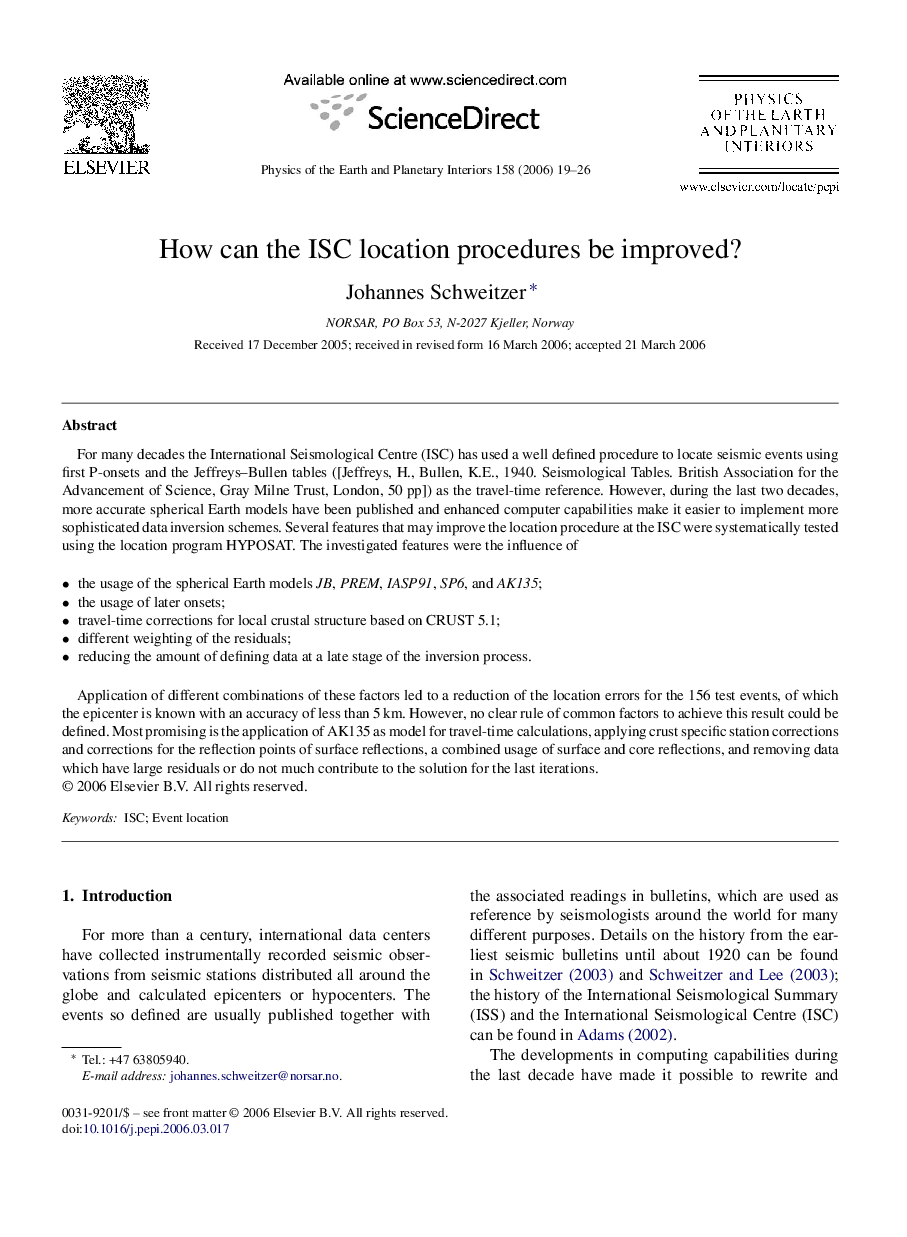| Article ID | Journal | Published Year | Pages | File Type |
|---|---|---|---|---|
| 4742933 | Physics of the Earth and Planetary Interiors | 2006 | 8 Pages |
For many decades the International Seismological Centre (ISC) has used a well defined procedure to locate seismic events using first P-onsets and the Jeffreys–Bullen tables ([Jeffreys, H., Bullen, K.E., 1940. Seismological Tables. British Association for the Advancement of Science, Gray Milne Trust, London, 50 pp]) as the travel-time reference. However, during the last two decades, more accurate spherical Earth models have been published and enhanced computer capabilities make it easier to implement more sophisticated data inversion schemes. Several features that may improve the location procedure at the ISC were systematically tested using the location program HYPOSAT. The investigated features were the influence of•the usage of the spherical Earth models JB, PREM, IASP91, SP6, and AK135;•the usage of later onsets;•travel-time corrections for local crustal structure based on CRUST 5.1;•different weighting of the residuals;•reducing the amount of defining data at a late stage of the inversion process.Application of different combinations of these factors led to a reduction of the location errors for the 156 test events, of which the epicenter is known with an accuracy of less than 5 km. However, no clear rule of common factors to achieve this result could be defined. Most promising is the application of AK135 as model for travel-time calculations, applying crust specific station corrections and corrections for the reflection points of surface reflections, a combined usage of surface and core reflections, and removing data which have large residuals or do not much contribute to the solution for the last iterations.
